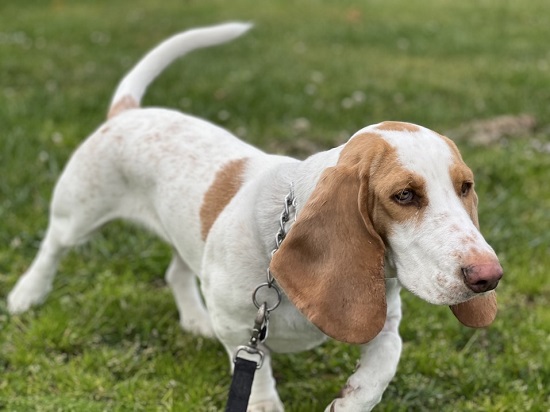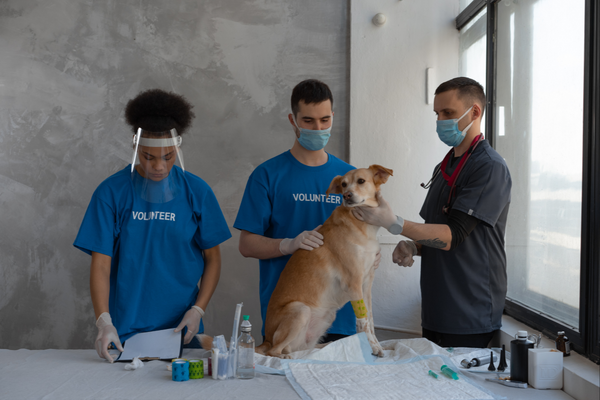If you live in a moderately warm climate and own a dog, it is essential to understand that your pet is sensitive to having a heat stroke. It is a dangerous health complication that could result in serious health problems like irreversible brain damage and possibly even death.
Heat stroke in dogs is a life-threatening condition. When your dog’s body temperature rises too high, multiple organs can become damaged. The most important organs at risk include the heart, kidneys, liver, and brain.
Canine heat stroke usually affects overweight or older dogs. Those that are less than six months old are also at risk. Also, dogs with heavy or dark coats are more at risk.
Going for a long walk or playing on the lawn could cause health issues for your dog if the sun is shining down on them. So, it’s important to be careful during hot weather to ensure your dog doesn’t suffer heat stroke.
When Dog Experience Heat?
You may have experienced those sweltering days when every pore in your body exudes sweat. Sweating is a handy cooling mechanism; the evaporation of the moisture on the surface of your skin cools your body.
But dogs don’t sweat the way we do, and their ability to cool off is much more limited. Dogs cool themselves mainly through the process of panting and breathing.
When dogs pant, the air passing over their mouths’ saliva allows them to cool. Moreover, a dog’s lung lining acts as an evaporative surface, much like our skin when we sweat. Blood vessels in the ears, face, and feet can also expand, helping dispel body heat.
A dog’s body temperature is generally between 100.2° and 102.8° Fahrenheit. When a dog’s cooling mechanisms are overwhelmed, his body may no longer be able to cool down, and the dog can become overheated.
Dogs who get too hot can suffer dehydration, heat cramps, or stress. If a dog’s body temperature rises past 104°, he’s in danger. Heatstroke can occur if the body temperature continues to increase above 106°.
Heatstroke is a life-threatening situation that can cause lethargy, weakness, seizure, collapse, coma, brain damage, and even death. If the body temperature reaches 109°, his heart, liver, brain, and kidneys can shut down.
Which Breeds are Most Likely to Get Heat Stroke?
Dogs can get heat stroke, But few breeds are more prone to it. The biggest concern is brachycephalic dogs, which refer to dogs with flat faces.
Breathing issues are the most significant health concern for these breeds. Thus, it’s easier for them to get heat stroke and more challenging to cool down.
Dogs with long hair or thick coats are also at risk. Some dog breeds have coats built to keep them warm in the winter. Additionally, some dog parents prefer to grow their dog’s hair longer for appearance.
Both of these can drive dogs to be hotter in the summer months. Some breeds have double coats to save them from warm and cold weather, but they can still suffer heat stroke.
Read Also: How To Care For A Female Dog In Heat?
Dog breeds are the most at risk of heat stroke:
- Pug
- Bulldog
- Boxer
- French Bulldog
- Cavalier King Charles Spaniel
- Akita
- Pekingese
- Boston Terrier
- American Bulldog
- Chow Chow
- Shih Tzu
- Bullmastiff
If your dog is overweight, they will get tired sooner too. So, you should be cautious about letting your overweight dog play in the heat.
How to Prevent Heat Stroke in Dogs
There are several ways that you can prevent heat stroke before signs occur. However, once you notice it heating up outside, it’s time to take extra protection to keep your pup safe.
#1 Make Sure Your Dog Drinks Enough Water
Always have water accessible for your dog, especially outside. Dogs often drink more during the summer, so check their water bowl to ensure it stays full.
#2 Limit Your Dog’s Time Outside
Exercise is essential for your dog, but when it’s hot outside, you should monitor their time in the sun. Spread out walks and outdoor playtime into short segments throughout the daytime.
That way, your dog won’t be outside long enough for them to suffer from heat stroke. If possible, ensure your dog remains in the shade during outdoor activities.
#3 Never Leave Your Dog in a Parked Car
Most dog parents know the risks of leaving a dog in a parked car. Even if it’s only a few minutes with the windows cracked, the car can heat up and turn into an oven.
A parked car can reach 100 degrees after only 5 minutes, even if it’s only 70 degrees outside. It’s essential to remember that dogs are more sensitive to heat than humans are. So, cars feel even hotter for them than they do for us.
#4 Keep Your House Cool
Some families turn off the AC to save money, but your home can heat up like a hot car. You don’t have to blast the A/C, but at least keep it on during summers. It also couldn’t hurt to turn on some fans in your dog’s room to keep them as cool as possible.
First Aid For Heatstroke in Dogs
Hyperthermia or heatstroke is when the body’s temperature increases too high. It can cause the heart, kidney, liver, and brain to shut down. A dog who experiences heatstroke can go into shock and may suffer irreversible organ damage.
Despite your best efforts, there may be a time when you will have to deal with heatstroke. Know the signs of an overheated dog; first aid and prompt medical treatment are important and can help save your dog’s life.
Symptoms of heatstroke include:
- Increased heart rate
- Excessive panting
- Disorientation or confusion
- Vomiting or diarrhea
- Body temperature higher than 104° F
- Bright red gums
- Collapse, coma, seizure
What To Do?
- Get your dog out of the heat immediately.
- Start cooling your dog down. The easiest way to cool a dog is to use a hose or wet towels. Never use ice.
- Get your dog to the vet immediately. You can continue cooling him with wet towels on the way.
- If you cannot get to a veterinarian immediately, watch his temperature and check for symptoms of shock. Stop the cooling method when your dog’s temperature gets 104° F. Do not continue cooling him, or the body temperature could drop too low, raising the risk of shock. Many medical issues caused by heat stroke won’t show up right away. Veterinary treatment is required.
You need to watch for heat stroke signs every time the weather warms up. Never leave your dog in the heat for too long; always ensure they have drunk plenty of water.
Summer can be difficult for dogs, but with enough care and caution, they can survive the extreme heat.

 DogExpress
DogExpress




















 in Chandigarh, India.
in Chandigarh, India. 
